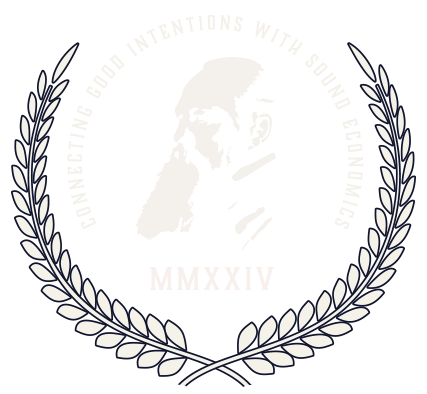The human worker is at his core an artist. Oftentimes, the term "artist" connotes a vocation of leisure, an esoteric profession of starving bohemians, set apart from the commercial world of utility. But this is a rather narrow view that discounts the essence of both art and business. In reality, art and business are subsets of the larger category entrepreneurship.
To gain a clearer view of art, business, and the similarities between the two, we can turn to the writings of Pope John Paul the Great. One of the late pontiff's favorite artists, Polish poet Cyprian Norwich, wrote that “beauty is to enthuse us for work, and work is to raise us up.” John Paul quoted this line not in Centesimus Annus or Laborem Exercens, his more economic encyclicals, but in his 1999 Letter to Artists. Art (the service of beauty) and business (the service of work) are two strains of a common movement, two forms of a common vocation. This vocation is the vocation to see and to serve, “to enthuse us” and “to raise us up.” Workers do this by providing goods and services; artists do this by providing beauty.
Art and work are simply two manifestations of an essential human trait: creativity. “Through his artistic creativity,” writes John Paul in A Letter to Artists, “man appears more than ever 'in the image of God,' and he accomplishes this task above all in shaping the wondrous 'material' of his own humanity and then exercising creative dominion over the universe which surrounds him.” This account of art sounds remarkably like the account of work found in Centesimus Annus:
The earth does not yield its fruits without a particular human response to God's gift, that is to say, without work. It is through work that man, using his intelligence and exercising his freedom, succeeds in dominating the earth and making it a fitting home.
The difference here is that the worker harvests the earth whereas the artist harvests “the wondrous 'material' of his own humanity.” The method is the same: by exercising their freedom in intelligence and creativity, both artists and workers approach “the visible world as a vast field in which human inventiveness might assert itself.”
This idea is akin to something Michelangelo once said about his masterpiece, David: When asked how he created this sculpture, the master reportedly replied that David was always there in the stone, and that he just chipped away everything that wasn't him. Both Michelangelo's marble slab and John Paul's “vast field” are potential somethings. In Centesimus Annus, John Paul explains the entrepreneur as someone with the vision to see potential, as someone with “the ability to foresee both the needs of others and the combinations of productive factors most adapted to satisfying those needs.” A keen eye, a creative mind, and a corporeal initiative make potential somethings into actual somethings.
But to what end? Work and art may be expressions of creativity, but to whom and for whom do they express? “Here we touch on an essential point,” writes John Paul to the artist:
Those who perceive in themselves this kind of divine spark which is the artistic vocation – as poet, writer, sculptor, architect, musician, actor and so on – feel at the same time the obligation not to waste this talent but to develop it, in order to put it at the service of their neighbor and of humanity as a whole.
Discovery, insight, the creative mind – these exist not only as aspects of the entrepreneurial mind, but as imperatives to serve. Because “it is through the free gift of self that man truly finds himself,” the products of that aspect of self called creativity ought to be oriented toward other persons. Creativity finds its fulfillment when it is creativity for. When one person invents – that is, discovers – a new good or combination of goods, the implicit question is “good for what?” Good for me is one possible answer; good for others is another. And willing good for others is the foundation for love.
If art and work are twin vocations, this means that artists and businesspeople are also twins. Perhaps they are more than twins. Perhaps both are simply entrepreneurs working with different materials. Artists often have little problem knowing they have a creative vocation (thus the starving artist stereotype); they do not as often, however, see themselves as servants. Contrarily, businesspeople do not often see their creative vocation; they do know, however, that they must serve their customer in order to survive in the market. The artist is a worker; the worker is an artist. Each can learn from the other, and perhaps find encouragement that the vocation to create and the vocation to serve are in many ways the same vocation.











